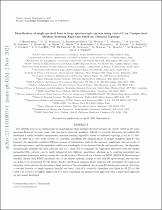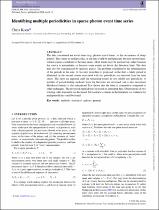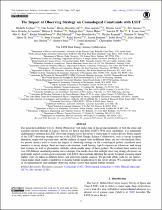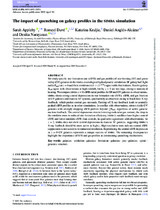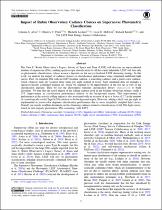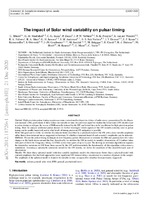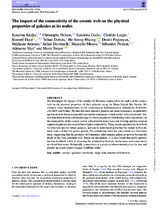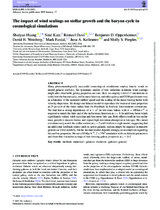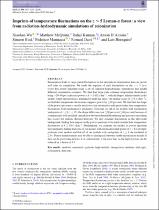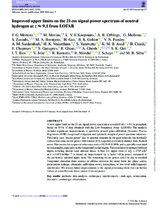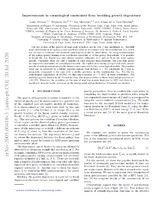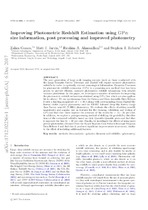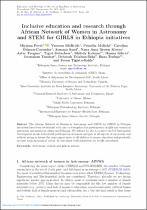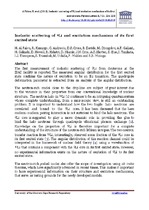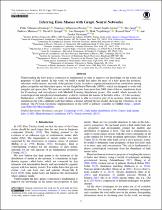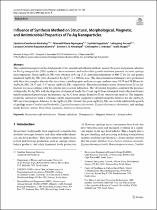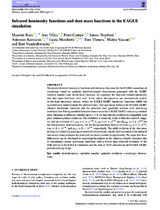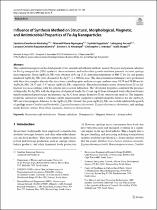Browsing Research Articles (Physics) by Title
Now showing items 229-248 of 510
-
Identification of single spectral lines in large spectroscopic surveys using UMLAUT: an Unsupervised Machine Learning Algorithm based on Unbiased Topology
(The Astrophysical Journal Supplement Series, 2021)The identification of an emission line is unambiguous when multiple spectral features are clearly visible in the same spectrum.However, in many cases, only one line is detected, making it difficult to correctly determine ... -
Identifying multiple periodicities in sparse photon event time series
(Oxford University Press, 2016)The data considered are event times (e.g. photon arrival times, or the occurrence of sharp pulses). The source is multiperiodic, or the data could be multiperiodic because several unresolved sources contribute to the time ... -
The Impact of Observing Strategy on Cosmological Constraints with LSST
(2022)The generation-defining Vera C. Rubin Observatory will make state-of-the-art measurements of both the static and transient universe through its Legacy Survey for Space and Time (LSST). With such capabilities, it is immensely ... -
The impact of quenching on galaxy profiles in the SIMBA simulation
(Oxford University Press, 2020)We study specific star formation rate (sSFR) and gas profiles of star-forming (SF) and green valley (GV) galaxies in the SIMBA cosmological hydrodynamic simulation. SF galaxy half-light radii (Rhalf) at z = 0 and their ... -
Impact of Rubin observatory cadence choices on supernovae photometric classification
(American Astronomical Society, 2023)The Vera C. Rubin Observatory’s Legacy Survey of Space and Time (LSST) will discover an unprecedented number of supernovae (SNe), making spectroscopic classification for all the events infeasible. LSST will thus rely on ... -
Impact of Rubin Observatory Cadence Choices on Supernovae Photometric Classification
(The Astrophysical Journal Supplement Series, 2023)The Vera C. Rubin Observatory’s Legacy Survey of Space and Time (LSST) will discover an unprecedented number of supernovae (SNe), making spectroscopic classification for all the events infeasible. LSST will thus rely on ... -
The impact of solar wind variability on pulsar timing
(EDP Sciences, 2021)Context. High-precision pulsar timing requires accurate corrections for dispersive delays of radio waves, parametrized by the dispersion measure (DM), particularly if these delays are variable in time. In a previous paper, ... -
The impact of the connectivity of the cosmic web on the physical properties of galaxies at its nodes
(Oxford University Press, 2019)We investigate the impact of the number of filaments connected to the nodes of the cosmic web on the physical properties of their galaxies using the Sloan Digital Sky Survey. We compare these measurements to the cosmological ... -
The impact of wind scalings on stellar growth and the baryon cycle in cosmological simulations
(Oxford University Press, 2020)Many phenomenologically successful cosmological simulations employ kinetic winds to model galactic outflows. Yet systematic studies of how variations in kinetic wind scalings might alter observable galaxy properties are ... -
Imprints of temperature fluctuations on the z ∼ 5 Lyman-α forest: a view from radiation-hydrodynamic simulations of reionization
(Oxford academic, 2019)Reionization leads to large spatial fluctuations in the intergalactic temperature that can persist well after its completion. We study the imprints of such fluctuations on the z ∼ 5 Ly α forest flux power spectrum using ... -
Improved upper limits on the 21 cm signal power spectrum of neutral hydrogen at z ≈ 9.1 from LOFAR
(Oxford University Press, 2020)A new upper limit on the 21 cm signal power spectrum at a redshift of z ≈ 9.1 is presented, based on 141 h of data obtained with the Low-Frequency Array (LOFAR). The analysis includes significant improvements in spectrally ... -
Improvements in cosmological constraints from breaking growth degeneracy
(EDP Sciences, 2020)The key probes of the growth of a large-scale structure are its rate f and amplitude σ8. Redshift space distortions in the galaxy power spectrum allow us to measure only the combination fσ8, which can be used to constrain ... -
Improving photometric redshift estimation using GPz: size information, post processing and improved photometry
(Oxford University Press, 2017)The next generation of large-scale imaging surveys (such as those conducted with the Large Synoptic Survey Telescope and Euclid) will require accurate photometric redshifts in order to optimally extract cosmological ... -
Inclusive education and research through African Network of Women in Astronomy and STEM for GIRLS in Ethiopia initiatives
(UWC, 2021)The African Network of Women in Astronomy and STEM for GIRLS in Ethiopia initiatives have been established with aim to strengthen the participation of girls and women in astronomy and science in Africa and Ethiopia. We ... -
Inelastic scattering of 9Li and excitation mechanism of its first excited state
(Elsevier, 2013)The first measurement of inelastic scattering of 9Li from deuterons at the ISAC facility is reported. The measured angular distribution for the first excited state confirms the nature of excitation to be an E2 transition. ... -
Inferring halo masses with graph neural networks
(Institute of Physics, 2022)Understanding the halo–galaxy connection is fundamental in order to improve our knowledge on the nature and properties of dark matter. In this work, we build a model that infers the mass of a halo given the positions, ... -
Influence of Synthesis Method on Structural, Morphological, Magnetic, and Antimicrobial Properties of Fe-Ag Nanoparticles
(Journal of Inorganic and Organometallic Polymers and Materials, 2023)This contribution reports on the development of two versatile and efficient methods, namely the green and gamma radiolysis for Fe-Ag nanoparticles (NPs) synthesis, characterization, and further their growth inhibition ... -
Infrared luminosity functions and dust mass functions in the EAGLE simulation
(Oxford University Press, 2020)We present infrared luminosity functions and dust mass functions for the EAGLE cosmological simulation, based on synthetic multiwavelength observations generated with the SKIRT radiative transfer code. In the local Universe, ... -
The infrared-radio correlation of star-forming galaxies is strongly M∗-dependent but nearly redshift-invariant since z ∼4
(EDP Sciences, 2021)Over the past decade, several works have used the ratio between total (rest 8-1000 μm) infrared and radio (rest 1.4 GHz) luminosity in star-forming galaxies (qIR), often referred to as the infrared-radio correlation (IRRC), ... -
Infuence of Synthesis Method on Structural, Morphological, Magnetic, and Antimicrobial Properties of Fe‑Ag Nanoparticles
(Springer, 2023)This contribution reports on the development of two versatile and efcient methods, namely the green and gamma radiolysis for Fe-Ag nanoparticles (NPs) synthesis, characterization, and further their growth inhibition potential ...

